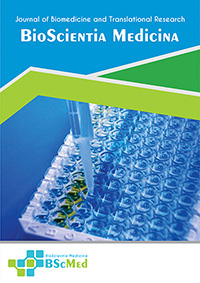Main Article Content
Abstract
Background: Current biomarkers for diabetic kidney disease (DKD), notably albuminuria and eGFR, are markers of established renal damage, limiting opportunities for early intervention. Integrins, cell-matrix adhesion receptors integral to podocyte health, are emerging as potential upstream indicators of the initial injury that drives DKD. This systematic review and meta-analysis provide the first quantitative synthesis of the evidence on the diagnostic and prognostic utility of integrins in DKD.
Methods: Following PRISMA guidelines, we systematically searched PubMed, Scopus, Embase, and Web of Science for studies published up to July 2025. We included studies that evaluated integrins in urine, serum, or tissue for the diagnosis of early DKD (microalbuminuria) or for predicting disease progression. Data were pooled using bivariate random-effects models for diagnosis and generic inverse variance models for prognosis.
Results: Eight studies involving 2,874 patients met the inclusion criteria. For diagnosing early DKD, five studies (n=1,880) yielded a pooled sensitivity of 0.88 (95% CI: 0.82-0.92) and specificity of 0.85 (95% CI: 0.79-0.90). The area under the summary receiver operating characteristic curve was 0.91 (95% CI: 0.88-0.94), indicating excellent accuracy. A subgroup analysis of non-invasive samples (urine/serum) demonstrated similarly high performance. For prognosis, three prospective studies (n=1,224) showed that elevated baseline integrins were associated with a significantly increased risk of disease progression (pooled Hazard Ratio: 2.15, 95% CI: 1.65-2.79) over a median 5-year follow-up.
Conclusion: Based on the current, albeit limited, evidence, integrins show significant promise as highly sensitive and specific biomarkers for the early detection and potent predictors for the progression of DKD. While these preliminary findings require validation in larger cohort studies, the measurement of non-invasive integrins may represent a valuable future tool for improving early DKD risk stratification.
Keywords
Article Details
As our aim is to disseminate original research article, hence the publishing right is a necessary one. The publishing right is needed in order to reach the agreement between the author and publisher. As the journal is fully open access, the authors will sign an exclusive license agreement.
The authors have the right to:
- Share their article in the same ways permitted to third parties under the relevant user license.
- Retain copyright, patent, trademark and other intellectual property rights including research data.
- Proper attribution and credit for the published work.
For the open access article, the publisher is granted to the following right.
- The non-exclusive right to publish the article and grant right to others.
- For the published article, the publisher applied for the Creative Commons Attribution-NonCommercial-ShareAlike 4.0 International License.





